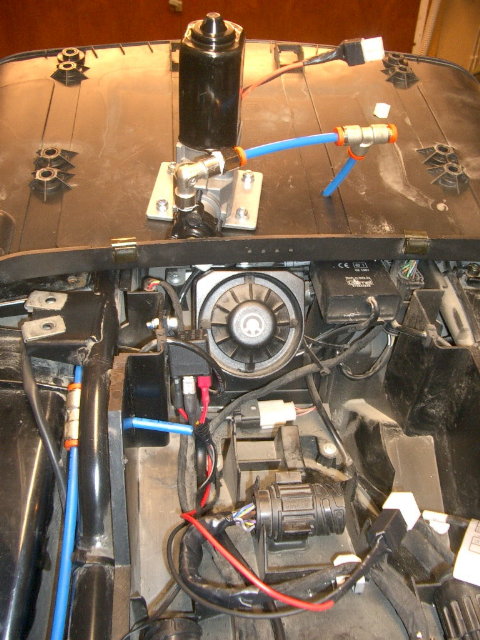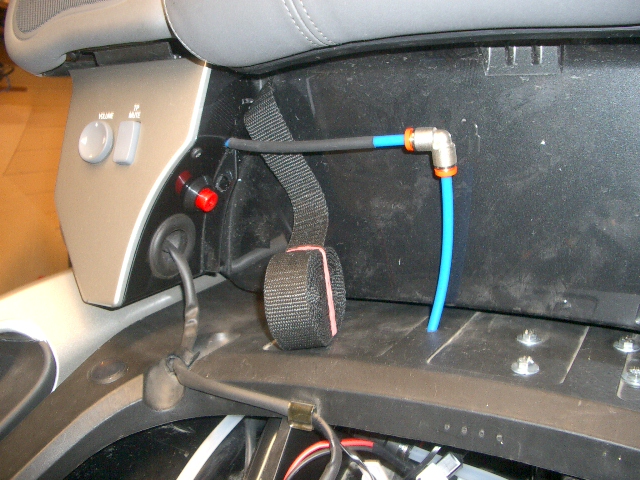This modification which I made back in 2005 is probably a bit outdated today as there are nice and small USB chargeable compressors available. But I figured I needed this. During the past 15 years I have used this a couple of times but never in real emergency. I have more assisted the others than needed it myself.
Anyhow, I started searching for the right kind of small and powerful enough compressor. Thomas seemed to be the brand that was widely used by other bikers. These compressors are used for instance in truck air seats and such.
The picture below shows a simple portable solution that was made by another LT rider. This would work just as well but "of course" I wanted to go a bit further and integrate the system in the bike and thus save some luggage space.
 |
Here was the space in which I was planning to install the compressor. Luckily the European LT:s did not have the emission canister stealing the space and requiring the famous "canisterrectomy" to be done at first. The heavy (2,5 mm2) cables with the white connector are the power feed for the compressor.
|
 |
Here you can see how I installed the compressor. It is actually hanging from the plastic cover / lid that is between the trunk and this compartment. The plastic lid is flipped upside down in this picture.
|
 |
Here the compressor is hanging from the lid and the lid is about to be installed in place.This picture also shows my pressurized 6 mm air pipeline that I pulled through the bike. The pipe going upwards from the T-connector goes to my air pressure gauge...
|
 |
...like this. The red button is the compressor start button. The compressor is powered by a relay so only a thin pilot current cable is needed for the button.
|
 |
The pressure gauge.
|
 |
I have a rubber hose that I keep inside the right saddle bag lid. (Note my first generation side case interior lights.)
|
 |
This hose connects to the two quick connectors I installed. One in the rear panel of the bike.
|
 |
And the other connector I installed next to the front fork.
|
 |
Like this...
|
 |
And the tail connector.
|
Some words of learning over the years:
- The female quick connectors on the bike must be covered or taped properly. Water/dust/sand gets in the connectors otherwise and the hose male connector does not fit properly as a result of this. Another problem can be that the connector does not close completely when disconnected. This is a major problem if you want to fill your front tire and the air leaks out from the rear quick connector! At first I used a rubber "plug" that was not tight enough but nowadays I simply tape the connectors completely and whenever I need the air I cut the tape off.
- The other issue I once encountered when helping out a fellow biker with a completely flat tire. I kept the compressor running for too long. The unit gets hot and so does the air that comes out from it. The plastic pipe closest to the compressor got too hot and of course blowed up. That was the end of that assistance. .So nowadays I run the compressor in max 3 min intervals and then let it cool off a minute or two in between.











Some good ideas here. I have a 2002. Ride it without the top case as I am 73 and do not want a tipover. I made a Ft Worth rack and a backrest for my wife. It has been a good bike. I do all the servicing. I have thought about a lighter bike but it is so good, I can't part with it. Recently the stingray developed some cracks. I patched it with pieces of ABS from a junk portable radio and ABS cement from the hardware store. Thanks for posting your ideas.
ReplyDelete